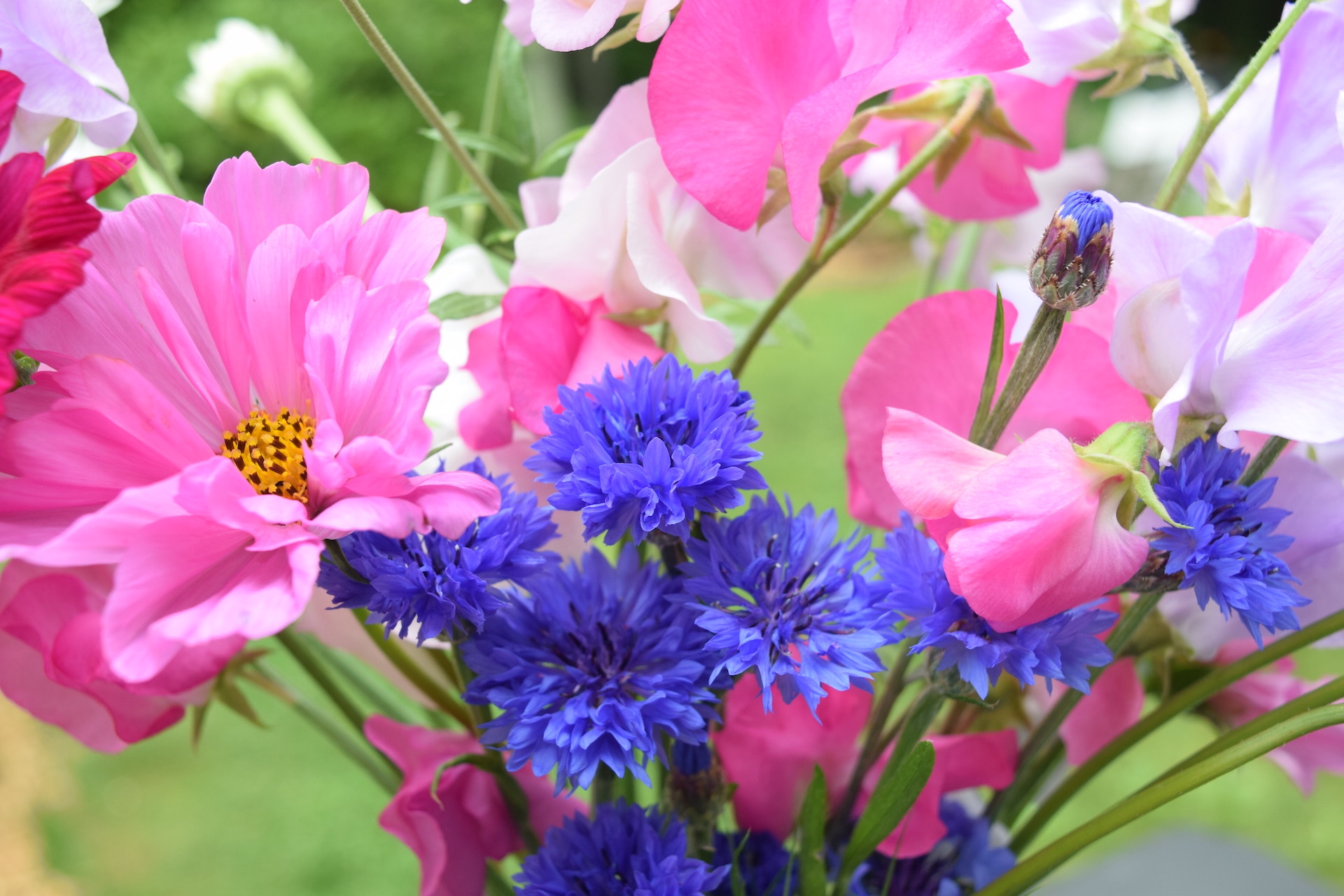Well, it has been quite a season so far, with plenty of challenges, and yes, rewards too. We’ve hit the season of abundance which makes harvesting a joy. These days you will find me patrolling the beds multiple times a day, checking for flowers I can cut at their peak moment, but just as often, scanning for potential problems.
Oh, the groundhog seems to have forgotten all about our heart to heart a month ago, and continues to predate my zinnias, yarrow, and sunflowers, but in spite of this I still think of July as beetle season. I am out scouring the blooms in the early morning and again in the evening with my “bucket of death”: a green container with about 2 inches of soapy water in it. It’s surprisingly easy to knock the pests off into the water where they meet their end. I’m not keen on killing things, but this method is more acceptable to me than spraying.

You will no doubt recognize the Japanese beetle, (pictured below), a foreign import that arrived in the U.S. back in 1916 and has since spread throughout the eastern states and also well into the midwest. When I think that I’m preventing each female from laying, (according to the U.S.D.A.), 40-60 eggs in the ground in a season, I feel pretty ok with doing my part to slow down this ravenous and destructive invader.

So far this season, though, I’ve collected more of this type of beetle in my bucket. The Oriental beetle (below), has also been around since it arrived in the 1920’s. Similar in many ways to the Japanese beetle, it arrives about two weeks earlier in the season. While it’s fairly active in the daytime it also enjoys the evening hours, (making it just as destructive in my garden), so I patrol.

Probably because I’m paying more attention than I once did, I’ve noticed a beetle I didn’t recognize, but it has been here since 1922. It’s the Asiatic Garden Beetle. The image below is from Colorado State University and was taken by Whitney Cranshaw. These guys eat at night. No, I haven’t been patrolling at midnight, but I probably should consider it at least once or twice a week.
Anyway, this beetle has spread throughout New England, along the Great Lakes into Ohio, and can be found all the way down to South Carolina. It feeds on around 100 different kinds of plants, but especially loves to eat the roots of perennial flowers, dahlias and roses among them, along with a selection of shrubs, trees, and veggies. Not a fussy eater. Because I’m not a night person, I usually come upon them when I am digging in the dirt in the daytime, and they are very adept at rapidly reburying themselves. The bucket really should be my constant companion this time of year.

So, between these three, we are experiencing beetle pressure morning, noon, and night. Surprisingly, we haven’t seen any rose chafers yet this season. But if they show up, I’ll be ready with my green bucket.


